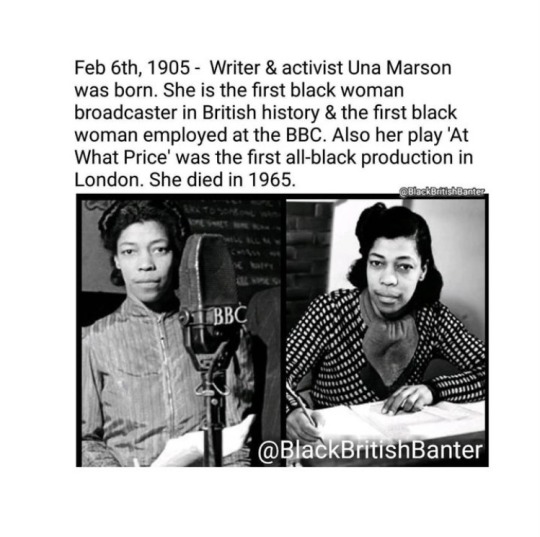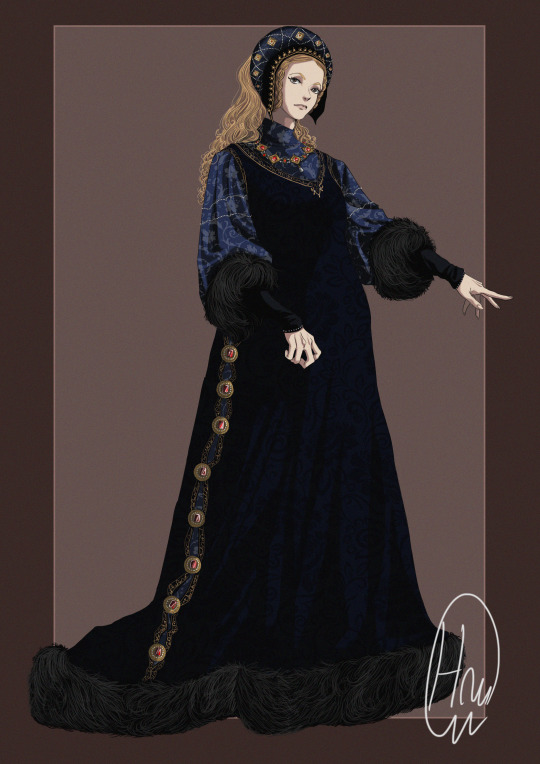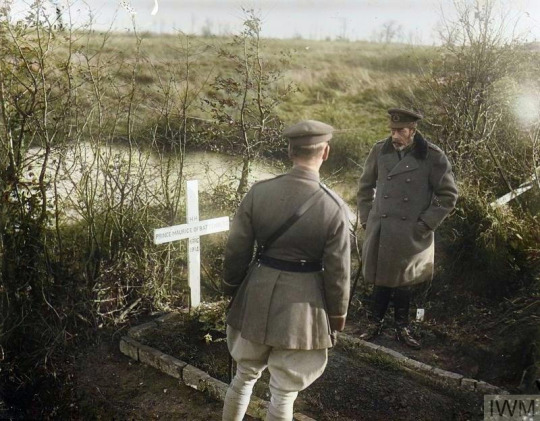#British History
Note
Try to have some respect the queen just DIED. It's not like she was evil or anything
And why should I do that for the head of a family that oversaw the British Empire's legendarily brutal concentration camps in colonialist Kenya during the 1952-1960 Mau Mau rebellion, has personally and repeatedly shielded credibly accused rapist Prince Andrew and tried to get the scandal to go away, personally paid Andrew's financial settlement while the family treated Meghan Markle terribly and gave her none of the same protection, exerted a huge amount of control over UK public finances without any transparency or disclosure (while also receiving huge amounts of that money), got to personally edit laws according to her likes and dislikes, enjoyed sweeping legal immunities that are described as a "threat to UK democracy," is the most visible figurehead of British colonialism even as her descendants put on a horribly tone-deaf Caribbean tour (twice in one year!) that was basically about unreconstructed imperial imagery of the kind that is poisoning Britain, while the entire country buys into the fantasy that she is an impartial, uninvolved, kindly and benevolent grandmotherly figure....?
Nah.
52K notes
·
View notes
Text

The future King George III, age 9, reading in a blanket fort in 1747
505 notes
·
View notes
Text

A woman moving to another village takes with her the bones of her dead son, decorated with marigolds, the native mourning flower, Balkan Front, June 1916.
Photo by Ariel Varges (1890-1972)
#ww1#wwi#great war#The Great War#The First World War#photography#historical photography#history#historical photos#British history#military history#canadian history#1918#1917#1916#siberia
884 notes
·
View notes
Text

The Lion in Winter - Trafalgar Square, London
#Trafalgar Square#Nelson's Column#London#Horatio Nelson#bronze lions#Edwin Landseer#naval victory#British history
3K notes
·
View notes
Text
"Language matters.
@barahmeh attends one of the largest marches for Palestine in British history. He asked people there why they support Palestine.
Full video on YouTube on the uncivilized channel":
youtube
#palestine#free palestine#freepalastine🇵🇸#london#britain#british history#history#british#class war#uncivilized#gaza strip#free gaza#gazaunderattack#save gaza#gaza#israel#israhell#benjamin netanyahu#fuck netanyahu#says netanyahu as us sends warships before gaza invasion#netanyahu a criminal of war#ausgov#politas#auspol#tasgov#taspol#australia#fuck neoliberals#neoliberal capitalism#anthony albanese
647 notes
·
View notes
Text

#black history#history#history posting#history side of tumblr#history tumblr#history tag#black lives matter#bbc news#british history#black women
362 notes
·
View notes
Text

#meme#mems#israel#free palestine#palestine#gaza#palestine will be free#israel massacre#israel is a terrorist state#occupied palestine#free gaza#from the river to the sea palestine will be free#united states#british history#world history#humanity#history
370 notes
·
View notes
Text

Elizabeth of York, fashion character design. Mourning outfit, c. 1482.
#the wars of the roses#15th century#medieval#middle ages#historical#british history#medieval england#art#illustration#sketch#edward iv#elizabeth woodville#elizabeth of york#henry vii#henry vi#margaret of anjou#margaret beaufort#isabel neville#richard iii#the white queen#the white princess#medieval fashion#historical fashion#character design#artists on tumblr#medieval costume#royals#house of york#plantagenets
214 notes
·
View notes
Text
don't know where else to put it
I was going to do a big wrap-up of Everything I Learned From The Must Farm Site Report PDFs but then life got super busy. So I only have the things I turned over and over in my mind, just now, and I want to go back and reread but now's not the time, I'll have to do another pass through at a later date.
But the one tiny vivid little factoid I've got in my mind that I just have to write down-- that necklace, with the big amber bead? Some of the glass beads were shattered from the heat but the amber bead was only charred a little on one side. So obviously some of the necklace was closer to the fire than the rest. I had initially connected that it was found near where there was probably a door, and I vaguely imagined someone dropping it as they fled. But now I'm convinced that's not it at all.
It was hanging up. It was hanging on a peg or a hook or a twig or something, right near the door, maybe even on display, and the big heavy amber bead was hanging at the bottom, and the glass beads were hanging at the top, and the fire at that point spread down from the roof and it burned through the string, and the glass beads shattered and the necklace fell down and when the floor collapsed it wound up in the mud.
The other thing I keep thinking is that the fire has to have started while no one was home. And modern people don't think about this, but in a premodern society where you've got a group of people living in a house, where you don't have appliances you can turn on and off, where starting a fire takes serious effort and getting it to a state where you can cook on it takes hours, where the food served at daily meals has to be the full-time job of several people because it's so labor-intensive--
there's never going to be a time where everyone is out of the village. There's going to be a sickly or elderly person who can't really get out of bed or move far, or a new mother who's just given birth and can't travel, and there'll be someone home to tend to whoever that is, and while they're home they're tending the fire and getting dinner started. There's just always someone there. I could see maybe one house being unoccupied for a brief time, but a village, that probably had at least ten houses if not more, and each house had ten people in it? Someone would be home. And those who weren't home wouldn't be far. We know the wheat etc. that the village was eating was grown on dry land, and the flax they were processing into fiber, but it could not have been far away. And the Fenlands are flat. You'd see smoke. Before the first house was even engulfed someone would have noticed the smoke and they'd be hurrying home.
But nobody tried to fight the fire. Nobody spread it, but nobody fought it either. Nobody pulled any timbers out to save them. Nobody threw water on anything.
Nobody was there. The houses were empty. Nobody fled the fire, because they weren't there to see it start, or they would have been able to stop it.
They hadn't been evacuated in any organized way, or surely the bead necklace would have been taken. Even if they were in a hurry, at least the pot full of cooked food would have been taken, or emptied into something more portable to bring along! There was so much prepared food lying around. And the thread bobbins-- bobbins and bobbins of painstakingly-spliced flax they'd grown and rippled and scutched, some of it then painstakingly plied, hours and hours of several people's labor, and it was on little bobbins, you could sweep that into a basket along with your bulkier household goods and barely take up any space at all and save hundreds, maybe thousands of hours of labor later when you needed to weave some new fabric. Thread like that was precious, and it's portable, and I can't believe they'd choose to leave so much of it behind if they had any chance to choose what they brought with them.
As I'd said, it's beyond possibility that everyone had gone out to do some job-- there would be people left behind in the houses for that. Maybe everyone had gone out for some religious observation, maybe. Maybe something was important enough to even haul out the oldsters and the infants, and to put off dinner until late. Maybe. it's possible. But someone (probably in Structure 1) just didn't bank the fire correctly, and it got away and got into the roof beams. A properly-banked fire wouldn't do that, and surely these people, managing cooking fires for their entire lives, would know how to do it. But even then I can't imagine them going that far, and again, they'd see the smoke and hurry home. Even if it was a religious rite they'd still hurry home from it, there's no way they wouldn't have come back.
So it seems to me that they had to have been forced out. No notice, no chance to pack, everything left where it was, last night's supper still in the pot, tonight's bread still rising on the trays, the lambs in their pens and the dog tied up in House 5.
I can't imagine what forced them out. It wouldn't be weather. It could be enemies. There were no weapons found in the houses, but that might mean they'd taken them with them-- except the spears, perhaps they were only hunting spears but you'd think still if everyone ran out to fight they would take them too, the spears and the axes; if it was a situation where they had to last-ditch defend themselves the non-warriors would certainly arm themselves with the wood axes and the hunting spears. But they didn't.
So my conclusion is that they all were forced to leave in a hurry, without banking the fires, without putting anything away, and they were prevented from returning. The cause could be human enemies-- perhaps the warriors of the settlement had gone out to fight and been defeated, and the victors came here and the survivors knew they could not fight and so came out unresisting to meet their fates.
The cause could be something religious or spiritual-- something they believed in made them leave and prevented them from returning. It would have to be incredibly compelling, however, because leaving without their food or their cooking pots or their domestic goods (the little bobbins of thread!!!!! you could easily carry those!!) would make it very hard for them to make their way in the world.
The cause could be-- I really don't know what else. Disease would maybe make them abandon a settlement, maybe leave no trace if they buried their dead on land, but they would pack first. Most things, they would pack first, they wouldn't leave cooked food sitting out, they'd bring the lambs and dog with them. Any orderly evacuation, they'd have brought the lambs and dog with them. They have to have left in a hurry without a chance to prepare. And there was no attempt at salvage afterward, they didn't come back to look for anything they'd left. The ruins of the burned buildings would have stood visible for decades, the ends of roof timbers above the water, much of structure 4 (possibly the gate house entrance) above the water, the palisade probably unburnt for much of its length. It would have been easy to find. There are only a couple of disarranged timbers in Structure 3 to suggest anyone ever poked through the wreckage at all, and that's not much to go on. Certainly nobody dug around in the mud, which would have been quite shallow at some times of year.
And while it's possible the evidence of what happened existed once, somewhere in the long-vanished sections of the village-- perhaps the fire started at that end, perhaps they tried to fight it there, perhaps they tried salvage over there and discovered the fire had burned too hot to make it worthwhile, perhaps the bodies of the villagers were all dumped into the channel over there after whatever battle there was-- perhaps there was all kinds of stuff. But I just think whatever it was left no trace. So many of the possibilities would now be invisible, three thousand years later.
All we have is the facts: They left in a hurry, leaving their lambs in their pens, their food on the table, the dog tied up in the house, the cooking fires not banked.
And whatever made them leave, they never came back.
154 notes
·
View notes
Text





Beckside House in Lancashire, England
#british architecture#british history#georgian history#georgian architecture#18th century#1750s#1760s#georgian england
604 notes
·
View notes
Note
“Its not like she was evil or anything”…. 😭😭😭😭😭😭😭😭😂😂😂😂😂😂😂😂😭😂😭😭😭😭😭😭😂😂😂😂😂😂😂😂LMFAOOEIJDJEJJFJFJFJDJJKEE
I mean... I put "tired historian" in my bio. One day people will learn not to come for me if they do not want to get a faceful of receipts, but today is not that day.
A few others I didn't get around to in my last post:
The brutal British treatment of Cyprus in the 1950s and how they generally fanned ethnic tensions to control and divide the island;
The absolutely horrifying role the Anglican church (during her reign, until the 1990s!) played in the Canadian Indigenous residential school system, forcing the Archbishop of Canterbury to personally apologize (not until earlier this year when they found all those skeletons buried in unmarked graves);
HOLY SHIT THE BRITISH LITERALLY DESTROYED THE ENTIRE COUNTRY OF KENYA'S HISTORY IN PHYSICAL/LITERAL/ARCHIVAL WAYS (related to my mention of concentration camps in the last post) in order to cover up their own crimes, in something called "Operation Legacy"; literally there are so many sources for this and even today historians are often blocked from investigating what really happened (again, this was all happening DURING THE QUEEN'S REIGN, not in some imagined benighted past)
QE2's own extensive lobbying efforts to keep her personal net worth secret and to hide Prince Philip's will for 90 years, while running the $28 billion imperial money machine of "The Firm"
(We all remember what a racist goblin Philip was, right?)
Likewise, Buckingham Palace, for a long time, banned LGBTQ and "visible" ethnic minorities from working there, even in office jobs, and the queen personally exempted herself from compliance with civil rights/sexual/racial discrimination laws;
And the Diana thing, which I'm not going to link to because we all know what happened, but the Queen was always known to act in ways that would preserve the monarchy "at all costs"
(But sure. Respect.)
8K notes
·
View notes
Text

Alexandra of Denmark when Princess of Wales, Richard L. Lauchert, 1862.
#art#aesthetic#victorian#victorian fashion#alexandra of denmark#queen of england#english royals#royal history#historical fashion#art history#1860s fashion#fashion#1860s#gowns#dresses#fashion history#royal fashion#royal art#British art#British history
310 notes
·
View notes
Text
The charitable interpretation of the law passed in the British Parliament today, an amnesty for all crimes committed by both paramilitary groups and British soldiers over the course of the Troubles, is this:
It is perfectly fine for British soldiers to murder innocent civilians, citizens of the United Kingdom. They will not be investigated for it. They will be given amnesty. They will face no justice.
That is the charitable interpretation. That is giving them the benefit of the doubt.
That is assuming they see the people they murdered as fellow British, and not something other and lesser than British. That this is a rule for all British citizens, and not an exception made for a certain group. That it's okay if members of that group died.
The charitable explanation is a chilling indictment of the British Government. The other explanation was British policy for eight hundred years.
I kinda hoped it had stopped being British Policy.
459 notes
·
View notes
Text

King George V pays a visit to the temporary grave of his cousin, Prince Maurice of Battenburg, who died in Ypres in October 1914, aged 23.
#King George V#world war one#the great war#the first world war#history#historical photos#world war 1#ww1#1917#canadian history#wwi#british royalty#british history#george
161 notes
·
View notes
Text

Yes I drew every English monarch from William the conqueror to Vicky…I had fun trying to figure what they’d look like, and using rly rubbish stylised medieval portraits lol but a lot of creative liberties. Notice: Henry Vs wound from being shot in the face and Edward Is famous droopy eyelid :)
#digital art#artwork#drawing#artists on tumblr#history#british history#digital arwork#illustration#procreate#tumblr art#history art#monarchy#i spent way more time on this than i should have
493 notes
·
View notes
Text
‘After the Equal Pay Act, I went through a shoe factory where they were making men's shoes and women's shoes. There were a lot of women pounding shoes - putting heels on actually. And there were a lot of men in another part putting heels on shoes. I said to the manager “I suppose you have equal pay?” And he said “Oh yes, we have equal pay.” So I asked him, "Do you mean to say that the women here running this machine and the men over there running the same machine, get the same pay?" He said "Oh no! Heavens no! Those men are putting heels on male shoes. The women are putting heels on women's shoes. It's not the same work."
‘There were six nails going into each shoe.’ Hazel Hunkins Hallinan declared ‘and they were using the same machines. But the women didn't get the same pay' (1977:1982).
She needed no reminder that men 'called the shots', that they defined the terms and could quickly change them to suit their own convenience - a common practice when women looked like making inroads into territory men had reserved for themselves. But even women could be forgiven for failing to anticipate that the Equal Pay Act could be implemented in this way. It took a peculiar twist in logic (and a commitment to underpaying women) to arrive at this arrangement.
-Dale Spender, There’s Always Been a Women’s Movement This Century
#dale spender#hazel hunkins hallinan#equal pay act#british history#female oppression#male entitlement
404 notes
·
View notes